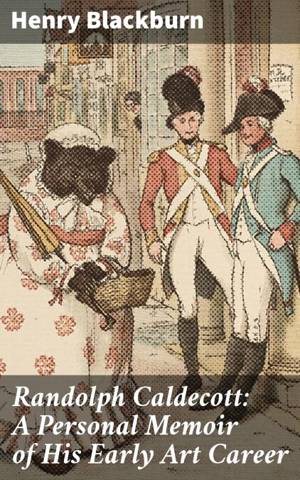
- Afhalen na 1 uur in een winkel met voorraad
- Gratis thuislevering in België vanaf € 30
- Ruim aanbod met 7 miljoen producten
- Afhalen na 1 uur in een winkel met voorraad
- Gratis thuislevering in België vanaf € 30
- Ruim aanbod met 7 miljoen producten
Zoeken
Randolph Caldecott: A Personal Memoir of His Early Art Career E-BOOK
Enriched edition. Unveiling the Artistic Journey of a Renowned Illustrator
Henry Blackburn
E-book | Engels
€ 0,49
Omschrijving
In "Randolph Caldecott: A Personal Memoir of His Early Art Career," Henry Blackburn offers an intimate exploration of the life and work of the renowned Victorian illustrator, Randolph Caldecott. Through meticulous research and vivid storytelling, Blackburn details Caldecott's formative years, revealing the influences that shaped his artistic style, which seamlessly melded narrative and visual elements. This memoir not only chronicles Caldecott's journey from obscurity to prominence, but also situates his contributions within the broader context of 19th-century art and literature, elucidating the relationship between his illustrations and the burgeoning world of children's literature. Henry Blackburn, a noted art historian and curator, draws upon his deep expertise in Victorian art and culture to craft a compelling narrative that reveals both the man and his craft. His own fascination with illustration and its evolution is evident throughout the memoir, as he provides critical insights into the challenges faced by Caldecott and his contemporaries. Blackburn's background in art history lends credibility to his observations, making his reflections both scholarly and accessible to a diverse readership. This memoir is highly recommended for anyone with an interest in the intersection of art and literature, particularly those eager to understand the origins of modern children's illustration. Blackburn's eloquent prose and keen analytical insights ensure that readers not only gain knowledge but also develop a profound appreciation for Caldecott's legacy.
In this enriched edition, we have carefully created added value for your reading experience:
- Hand‐picked Memorable Quotes shine a spotlight on moments of literary brilliance.
- Interactive footnotes clarify unusual references, historical allusions, and archaic phrases for an effortless, more informed read.
In this enriched edition, we have carefully created added value for your reading experience:
- Hand‐picked Memorable Quotes shine a spotlight on moments of literary brilliance.
- Interactive footnotes clarify unusual references, historical allusions, and archaic phrases for an effortless, more informed read.
Specificaties
Betrokkenen
- Auteur(s):
- Uitgeverij:
Inhoud
- Aantal bladzijden:
- 7189
- Taal:
- Engels
Eigenschappen
- Productcode (EAN):
- 4064066140267
- Verschijningsdatum:
- 19/12/2019
- Uitvoering:
- E-book
- Beveiligd met:
- Digital watermarking
- Formaat:
- ePub

Alleen bij Standaard Boekhandel
Beoordelingen
We publiceren alleen reviews die voldoen aan de voorwaarden voor reviews. Bekijk onze voorwaarden voor reviews.








